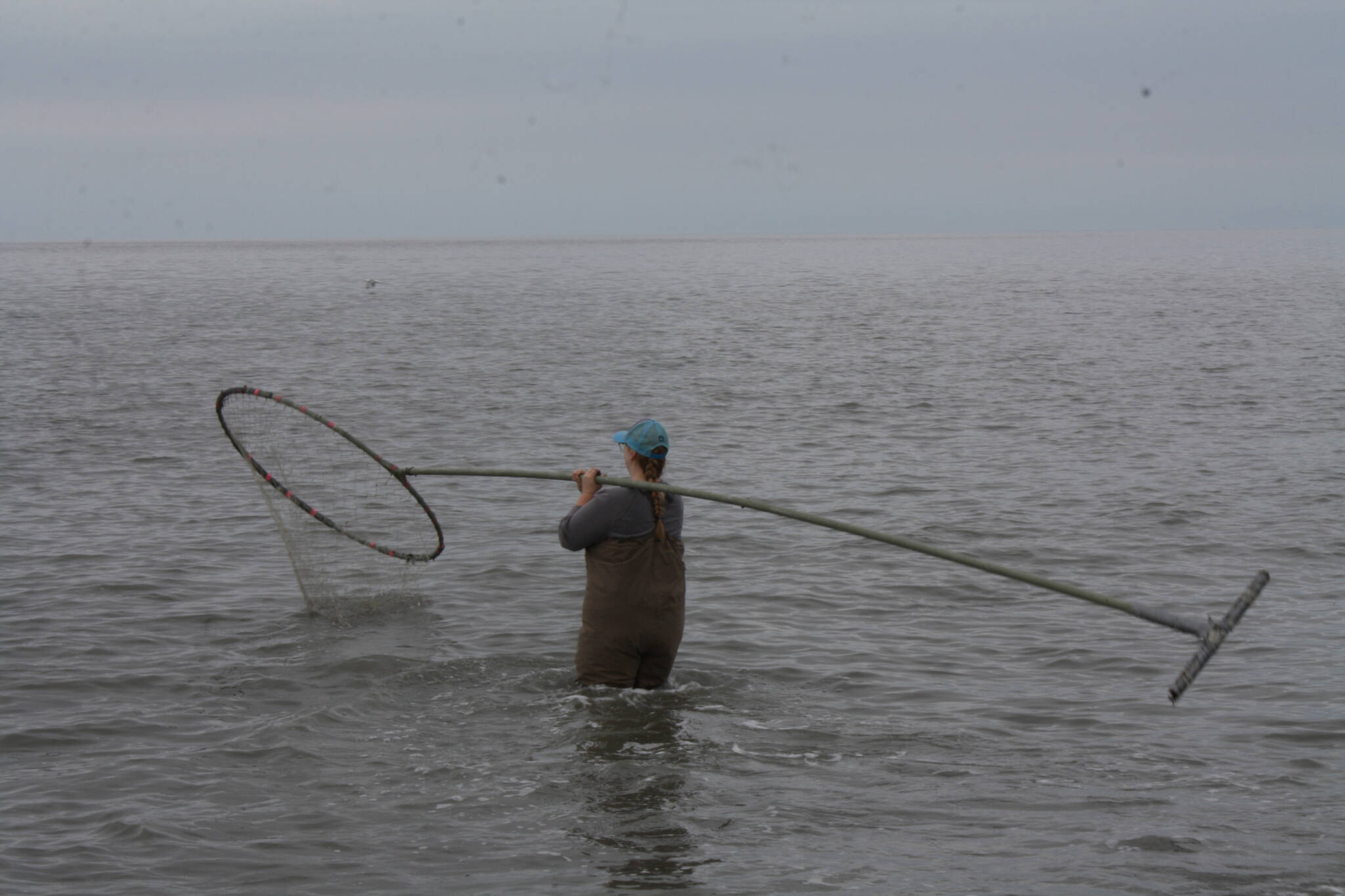Starting Friday, the Kenai River personal use dipnet fishery will be open for 24 hours per day, the Alaska Department of Fish and Game’s Division of Sport Fish announced Thursday. From 11 p.m. on Friday, July 22, through 11:59 p.m. on Sunday, July 31, the fishery will be open for 24 hours per day.
Also, the department increased the sport fishing bag and possession limits. In the Kenai River downstream of Skilak Lake, anglers are now limited to six salmon per day and 12 in position. The change applies to salmon 16 inches or longer, except for king, pink and coho salmon, and is effective from Friday, July 22 through Saturday, Dec. 31.
The expansion comes about one week after the department announced a new round of king salmon fishery closures. Retention of king salmon continues to be prohibited on the Kenai River and on the Kasilof River downstream of the Sterling Highway Bridge. Both closures are effective through the end of July.
Anyone participating in Upper Cook Inlet’s personal fisheries must be an Alaska resident and must hold a current sport fishing license as well as an Upper Cook Inlet Personal Use permit. Permit harvest and participation must be reported to the Alaska Department of Fish and Game no later than Aug. 15.
Under the Upper Cook Inlet Personal Use Salmon Fishery Management Plan, the department can increase dipnetting hours in the Kenai River personal use fishery if it predicts runs of more than 2.3 million late-run Kenai River sockeye salmon and if it is anticipated that the escapement goal will be reached.
As of July 16, Kenai River sockeye salmon passage into the river was about 19% complete; the projected in-river run is between about 910,000 and 1.6 million sockeye salmon. The Division of Sport Fish reports that lower Kenai River sockeye salmon fishing “has been fair” and should improve.
Fish count data for the late-run Kenai River sockeyes published by the Alaska Department of Fish and Game show that about 190,000 fish were counted by the Kenai River Mile 19 sockeye salmon sonar site on July 20. That’s up from about 74,000 fish counted on July 19 and about 40,000 fish on July 18.
To date, about 520,000 fish have been counted by the sonar site. That’s more than the number of fish that had been counted by the sonar site at this time last year, when about 324,000 fish had been counted by the sonar by July 20.
Daily fish counts can be accessed on the Alaska Department of Fish and Game’s website at adfg.alaska.gov/sf/FishCounts.
Reach reporter Ashlyn O’Hara at ashlyn.ohara@peninsulaclarion.com.

